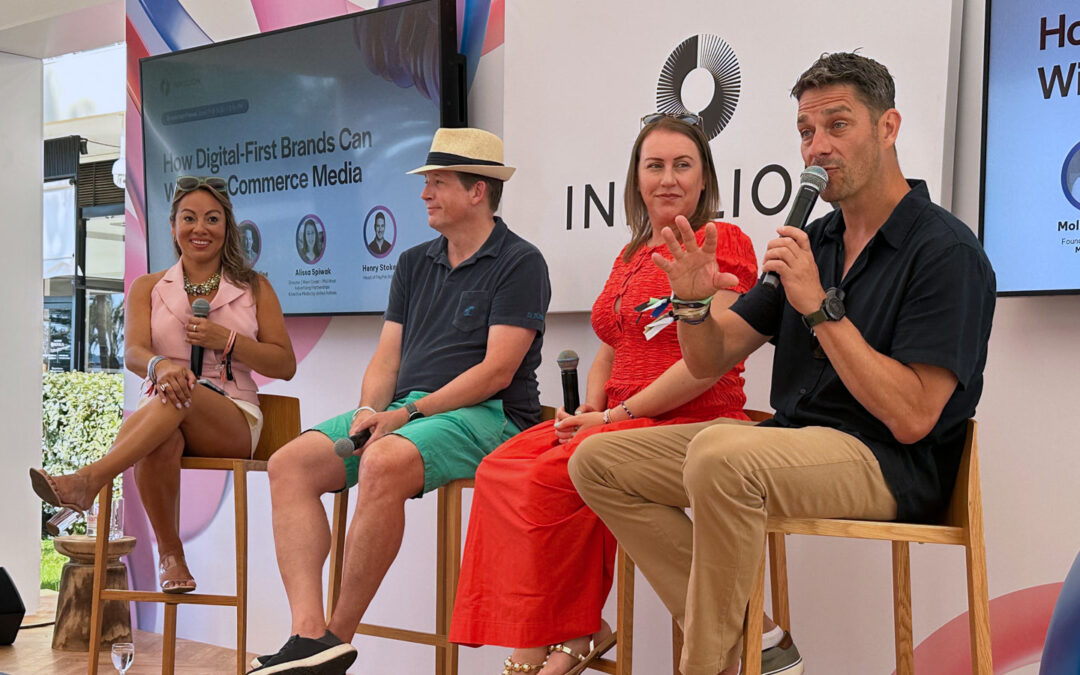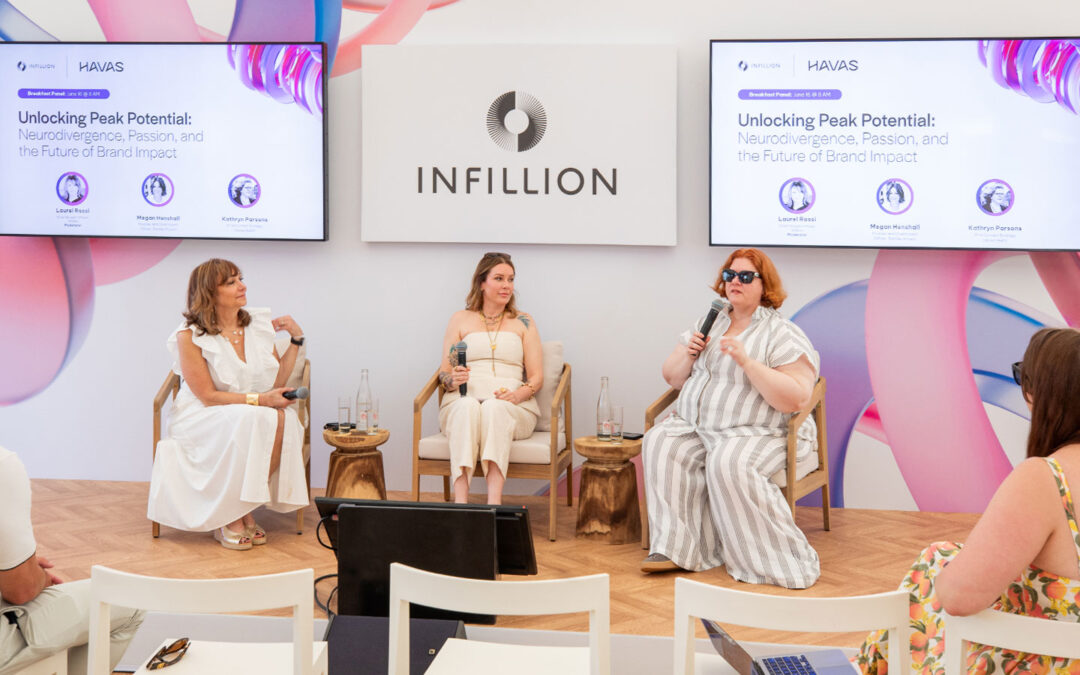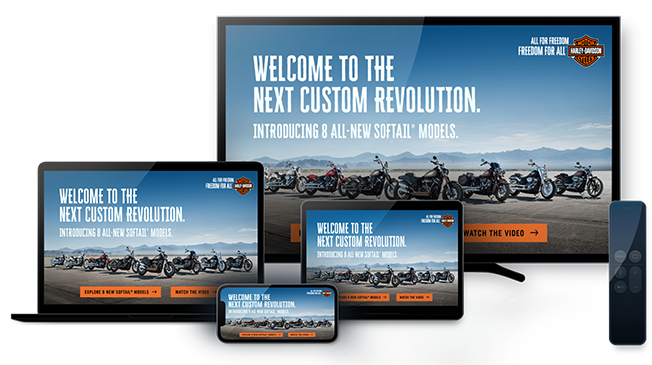A New Era for Streaming Ads: How Publishers Are Upgrading Their AVOD Game, with Innovid

A few years ago, it looked like ads might not make a clean jump from the classic TV spot to the booming new medium of streaming video. For one, all the attention was on ad-free (at the time) subscription services like Netflix. And the fact that much streaming content is accessed on-demand means that viewers have become accustomed to fast-forwarding through video ads or taking a break while commercials play, knowing they aren’t at risk of missing any of the content they wanted to watch.
But in 2023, AVOD is booming. Just ask Innovid, which serves over a billion digital video ad impressions per day. “We’ve seen the shift of impressions into ad-supported from a user time spent perspective,” said Dan Mouradian, VP of global client solutions at Innovid, at a panel this week at Cannes Lions 2023. “We’ve seen, through that time period [of Q3 2022 to Q1 2023], about a 25% increase in users spending time with ad-supported content…Consumers are choosing the ad-supported model.”
Mouradian was speaking on a panel co-hosted by Innovid and Infillion at Cannes Lions 2023, commemorating their new partnership to bring Infillion’s interactive CTV ads seamlessly into Innovid’s technology. He was joined by Lauri Baker, SVP Strategic Partnerships at Infillion; Darren Sherriff, VP of Advertising Solutions and Business Strategy at FOX; Dan Riess, EVP and Chief Growth Officer at TelevisaUnivision; and Shane Ankeney, President of Havas Media Group NA.
Moderated by IAB president David Cohen, this panel addressed the question: How can publishers take advantage of this new AVOD trend and ensure it lasts?
The AVOD Paradox: It’s TV, But You Can’t Advertise Like It’s TV
One thing has become very clear over the past few years: Consumers think of CTV as just TV now. They don’t mentally differentiate whether they’re watching live broadcast TV or a stream from Amazon Prime TV or Hulu. As Darren Sherriff of FOX said, “From a user perspective, they turn on their TV and they don’t care if it’s their cable box or they go to an app, they still want to see that live sporting event, live news, whatever it may be.”
But there’s a twist here. While consumers may think of CTV as just TV, their expectations for advertising have changed. You can blame ad blockers, ad-skippers, or subscription services – either way, it’s clear that consumers don’t put up with TV commercial breaks like they used to, and advertisers that seem to be shoving a message down their throats will be met with revulsion and negative brand perception. To boot, publishers that enable this kind of ad overload may see consumers backing off from their platforms. Subscription churn is high, and the 20th-century viewer has plenty of other options.
“The concept of programming today where every four minutes, five minutes, six minutes, you have to stop and spend a minute or three minutes watching commercials – we have to create a different commercial experience in this new digital economy,” Lauri Baker said. “It can’t look like old linear commercial modeling.”
That imperative is at the core of the new Innovid-Infillion partnership. Infillion’s TrueX ads require a user to proactively opt into the interactive experience, and then require a minimum amount of time spent interacting with the ad to then move back onto the content.
Getting Real About Consumers Choosing Ads
First of all, advertisers need to understand that the reason consumers are flocking to ad-supported streaming services isn’t because they’re thrilled to see the ads. It’s because they want to save money.
“I don’t think we ever underestimated the cheapness of the American consumer,” Havas’ Shane Ankeney said. “If we give them an option that is less [expensive] and will be ad supported, then that will continue to grow.”
To that end, it’s crucial for advertisers and publishers alike to understand that advertising is a transactional relationship, and that consumers expect ads that will be high-quality and unintrusive. Ad loads that feel excessive don’t respect the transaction that those consumers have agreed to.
“I feel like we keep trying to apply old models to new media and it drives me nuts,” TelevisaUnivision’s Dan Reiss said. “It’s like when you first think about mobile and it was basically a big giant internet page on your phone, you’re trying to scroll around, [and] it’s a horrible experience. We ultimately figured it out, kind of, [but in TV] we still are applying the old model. Ad pods are a perfect example. That’s how we did it for decades in linear television, [but that] doesn’t mean that is how we could or certainly should do it today.”
“My gut tells me that [consumers] would all prefer no ads, but from a cost perspective, everyone will appreciate ads, or at least accept ads, because it gives them [the] opportunity to enjoy great programming,” Lauri Baker said.
But those ads have to be worthy of appreciation. Which brings us to the other heated topic at hand…
Pushing CTV to New Creative Frontiers
Here’s the great thing about advertising on CTV, and streaming in general: You can do a whole lot more than you would’ve done in a 30-second linear TV spot. Publishers’ user interfaces can facilitate rich interactivity that doesn’t just engage consumers like never before, it can also tap into signals about whether they’re paying attention to the ads on their screen. (And, to plug the Infillion-Innovid partnership, now they can do it with one fewer tech integration.)
When asked to talk about the best ad they’d ever built for CTV, the panelists overwhelmingly turned to campaigns with memorable interactive features – and also a respect for users’ time and attention. “Everybody knows the ‘Share a Coke’ campaign,” Innovid’s Dan Mouradian said of the legendary Coca-Cola tagline. “We rendered users’ first names onto the bottle, and it was in partnership with a publisher that was passing us that information, so it was all opted-in information.”
TelevisaUnivision’s Dan Reiss gave a plug to QR codes. “For whatever reason, QR codes are very effective for us,” he said. “They’re a little more respective of the consumer journey, because people can hold onto them and not buy right away, which is how people want to try something out and look at it a few times.”
Lauri Baker talked about an opt-in ad that Infillion’s TrueX had deployed on behalf of Amazon Echo. “The consumer could actually speak to the television through their remote and engage with the commercial that way. They could turn the lights on, they could play with the fish in the fish tank,” Baker explained. (It was the first-ever CTV ad to use voice control.) Baker explained that, in general, lightweight interaction like that drives more engagement on CTV. “We’ve found, at least at Infillion, that anything playable drives engagement – so, quizzes and polls.”
That’s because CTV isn’t “lean-back” in the same way that linear TV was. “We’re completely leaned in, we’re engaged, we have the remote in our hand,” Mouradian said. “By enabling these interactive experiences, you’re presenting an option to a consumer to have a better ad experience overall.”
Subscribe to our blog:
Related Posts:

The Consumer-First Approach To Commerce Media Network Success
Your airline is an ad platform now – and so is your bank. Commerce media networks are one of the most interesting areas of growth in advertising, and at Cannes Lions, plenty of them were onsite to talk about it. That’s a conversation that we explored at the Infillion...

Why Neurodiversity Will Lead The Way In The AI Era
One in five employees today identifies as neurodivergent – as having autism, ADHD, dyslexia, or other cognitive variations – and that’s only going to grow. According to research from ZenBusiness, fully half of Gen-Z identifies with neurodivergence on some level....

How Brands Can Win In Times Of Uncertainty
The 2020s have been defined by relentless uncertainty across every industry. For brands and advertisers, it’s been one curveball after another - with the pandemic, AI, and inflation rapidly altering consumer behavior and shifting goal posts. As 2025 reaches its...
Let's Connect
We can help you create the personalized ad experiences viewers expect.

